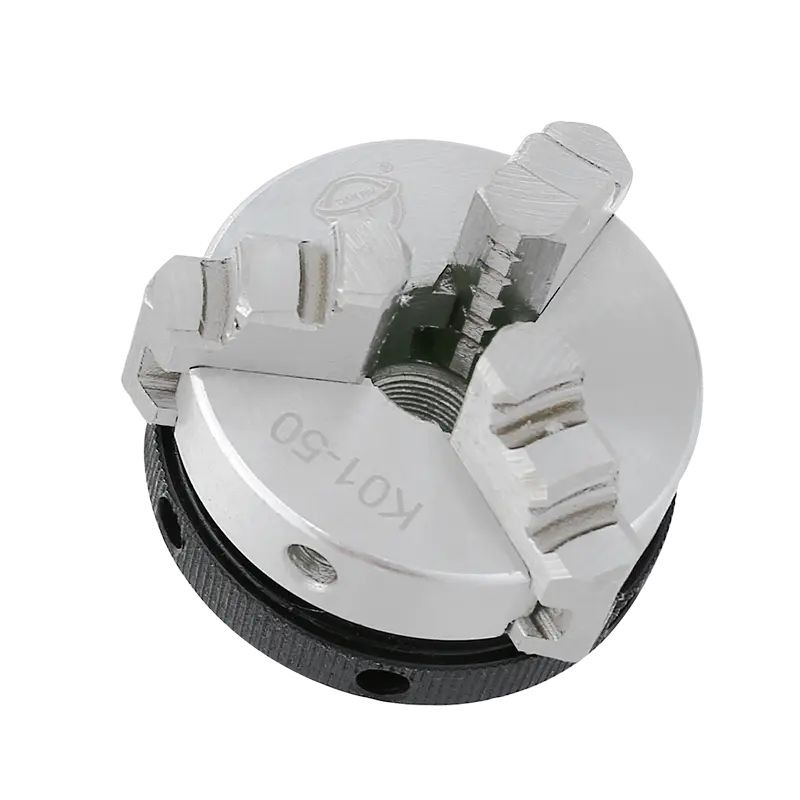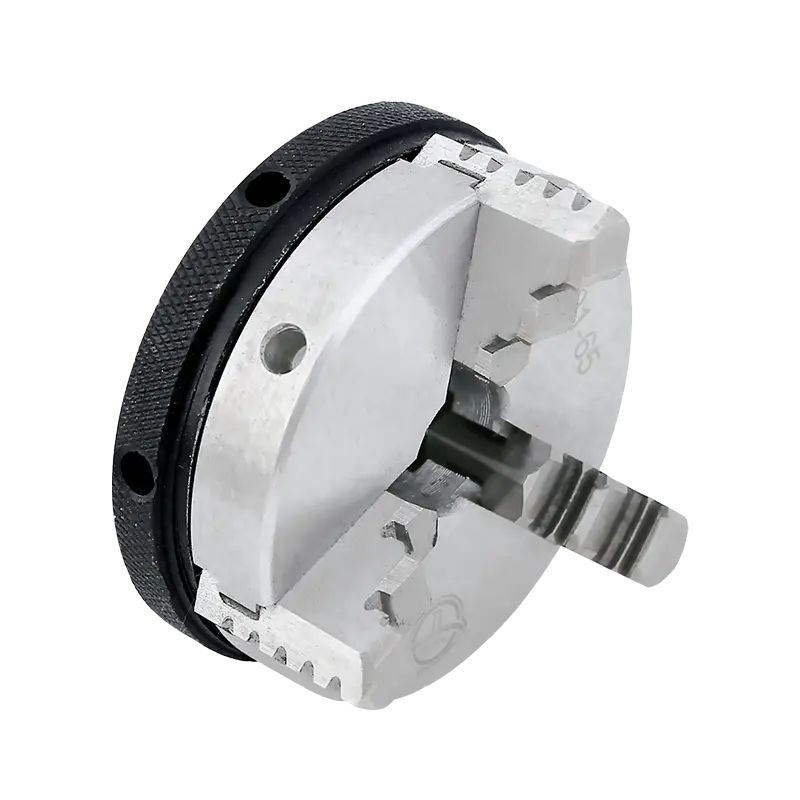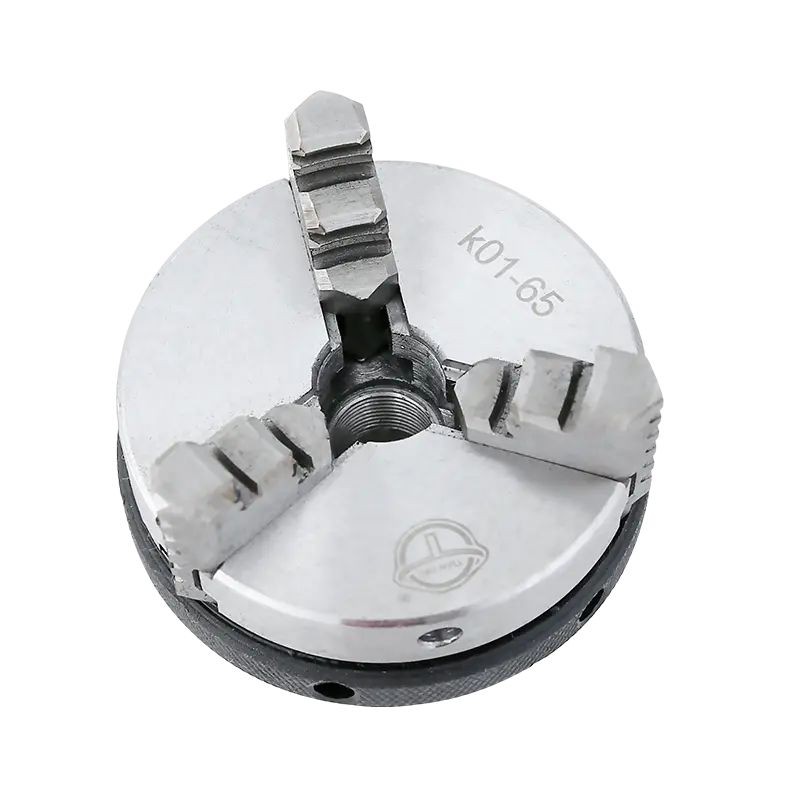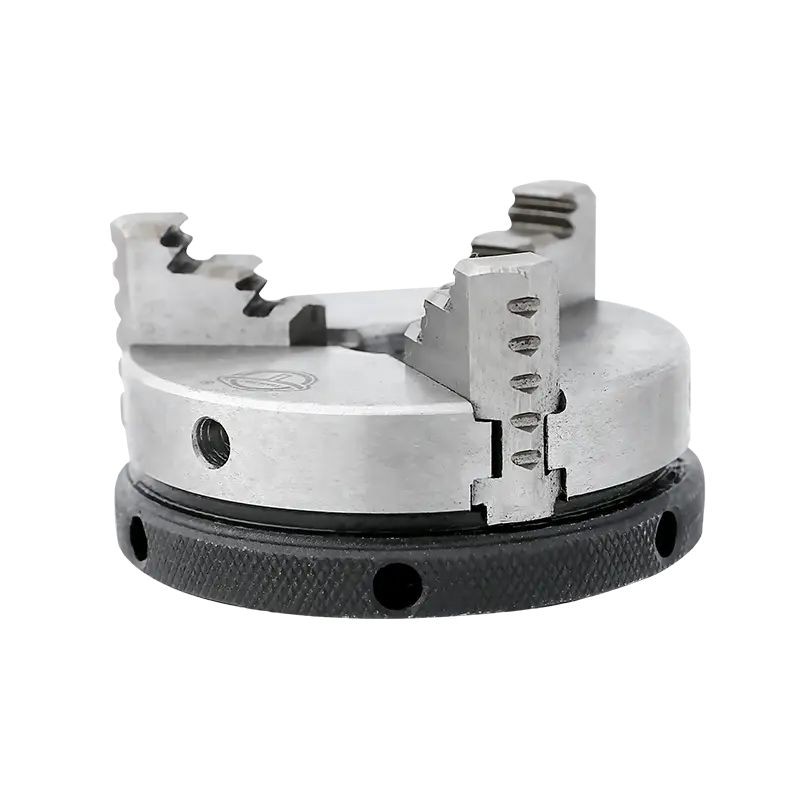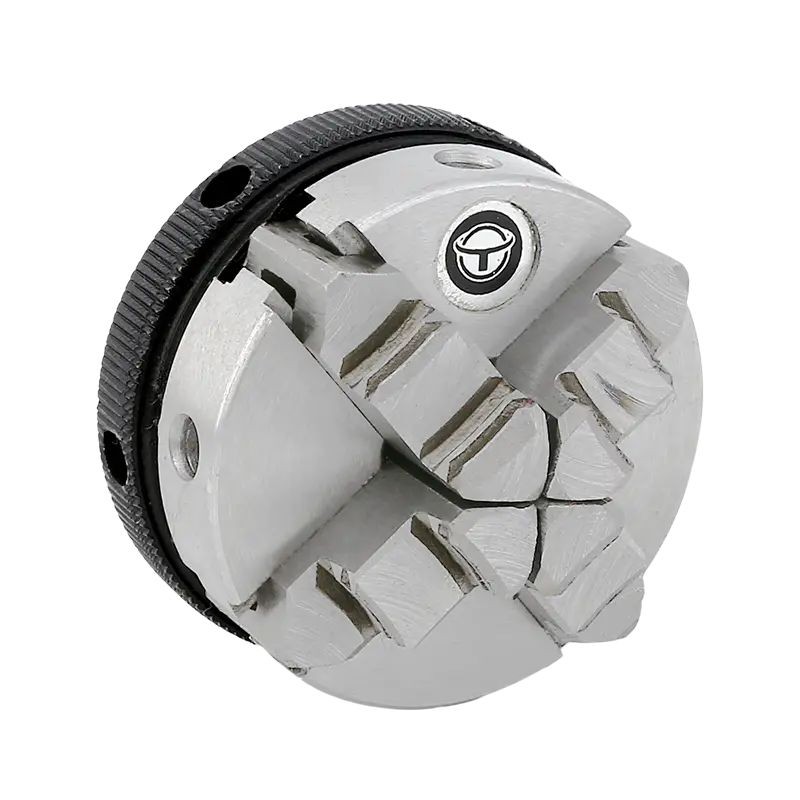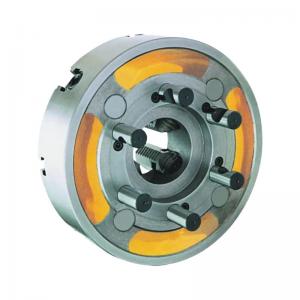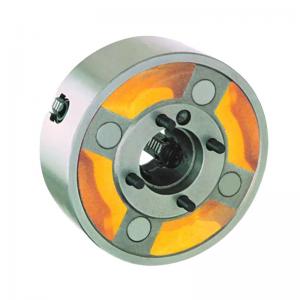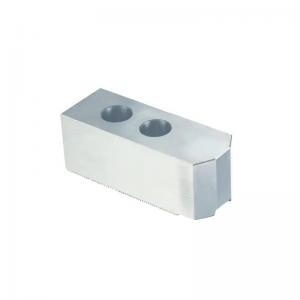Three-jaw/four-jaw self-centring manually operated chucks
- Category: Manually Operated Chucks Series
- Product description:Wholesale Manually Operated Chucks Manufacturers Sales Cheap Self-Centring Manually Operated Chucks, a three-jaw chuck is preferred for cylindrical workpieces, offering excellent concentricity, a four
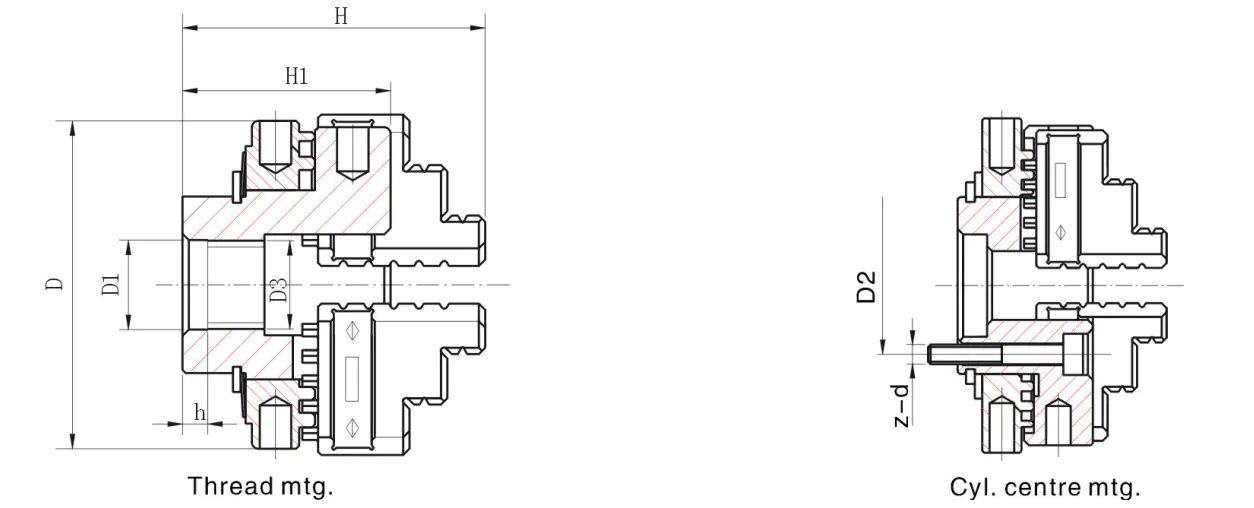
|
D Size |
D |
D1 |
D2 |
D3 |
z-d |
h |
H |
Clamping range |
Kg Net WT. |
||
|
A-A1 |
B-B1 |
C-C1 |
|||||||||
|
50(2") |
50 |
15 |
/ |
M14x1 |
/ |
5 |
33 |
2-15 |
22-48 |
20-47 |
0.5 |
|
63/65(2 ½") |
68 |
15 |
/ |
M14x1 |
/ |
5 |
33 |
2-25 |
22-60 |
20-58 |
0.6 |
|
80(3") |
82 |
17 |
28 |
M16x1 |
3-M5 |
5 |
35 |
3-18 |
25-75 |
22-63 |
1.5 |
|
100(4") |
102 |
30 |
42 |
M24x1.5 |
3-M6 |
5 |
36 |
2-30 |
22-90 |
30-80 |
2.0 |
Exploring the Differences Between Four-Jaw Self-Centering and Three-Jaw Chucks
In the field of machining and manufacturing, chucks are crucial tools for securely holding workpieces during various operations. Among the different types of chucks available, the four-jaw self-centering manually operated chuck and the three-jaw chuck are widely used. While they share the common goal of centering workpieces, there are distinct differences between these two chuck types. In this article, we will delve into the characteristics that set them apart and understand their unique functionalities.
(1)Clamping Mechanism
A three-jaw chuck comprises three jaws that move in unison, ensuring simultaneous gripping and centering of the workpiece. The jaws are actuated through a scroll mechanism, allowing for quick and accurate adjustments. This design offers simplicity and ease of use, making it ideal for applications involving cylindrical workpieces.
On the other hand, a four-jaw chuck consists of four independent jaws that can be individually adjusted. This design allows for precise centering and gripping of irregularly shaped or non-symmetric workpieces. Each jaw can be moved independently, providing flexibility and adaptability in accommodating various workpiece geometries.
(2)Workpiece Compatibility
The number of jaws in a chuck affects its versatility and compatibility with different types of workpieces.
A three-jaw chuck is commonly used for round or cylindrical workpieces. Its symmetrical configuration evenly distributes the clamping force, resulting in excellent concentricity. This makes it suitable for gripping shafts, bars, and pipes, where precise centering is crucial.
In contrast, a four-jaw chuck offers greater flexibility and adaptability. The individual adjustment capability of each jaw allows for holding irregularly shaped or non-cylindrical workpieces. This makes it ideal for gripping square, rectangular, or asymmetric parts, as well as workpieces with off-center holes or complex geometries.
(3)Gripping Force Distribution
Another notable difference between the two chuck types is the distribution of gripping force.
In a three-jaw chuck, the clamping force is divided equally among the three jaws. This balanced distribution ensures symmetrical gripping and optimal centering. However, it may result in slightly reduced gripping force compared to a four-jaw chuck.
In a four-jaw chuck, the operator can independently adjust each jaw, allowing for precise control over the gripping force applied to individual points on the workpiece. This feature is particularly useful when dealing with delicate or unevenly machined workpieces. The ability to customize the gripping force enhances the chuck's versatility and accuracy.
(4)Machining Symmetry and Balance
While both chuck types can achieve centering, the three-jaw chuck inherently possesses better symmetry due to its design. This symmetry can be advantageous when machining highly precise components that require optimal balance, such as rotating shafts or components for rotational applications.
(5)Changeover Time and Efficiency
In terms of change over time, the three-jaw chuck has an advantage over the four-jaw chuck. Since all three jaws move simultaneously, changing and centering the workpiece can be done quickly, making it ideal for high-production environments where efficiency and time-saving are crucial.
A three-jaw chuck is preferred for cylindrical workpieces, offering simplicity, ease of use, and excellent concentricity. Meanwhile, a four-jaw chuck provides greater flexibility, adaptability, and the ability to grip irregularly shaped or non-symmetric workpieces with precision.
INQUIRY
CATEGORIES
LATEST NEWS
CONTACT US
Name:
phone:+86-576-82356788
Whatsapp:8657682356788
Email:tp@tpchuck.com
Add:Luqiao District, Taizhou City, Zhejiang Province, China.

